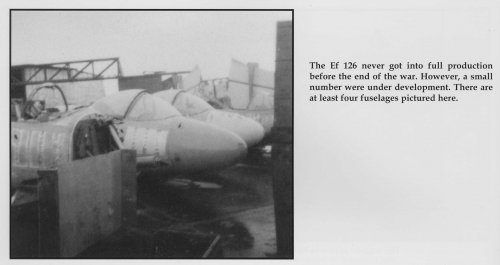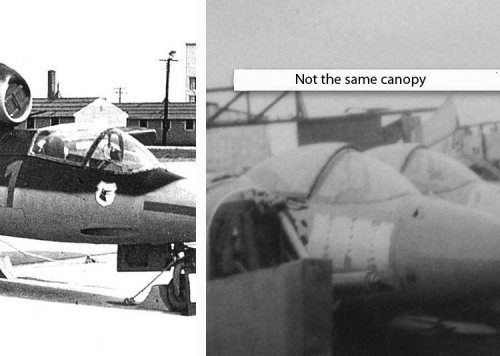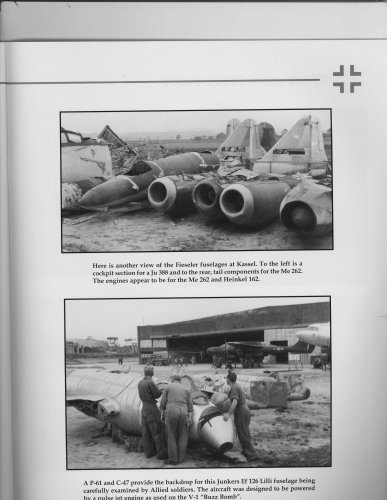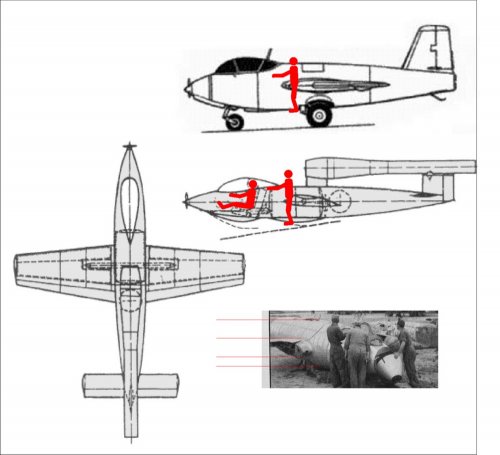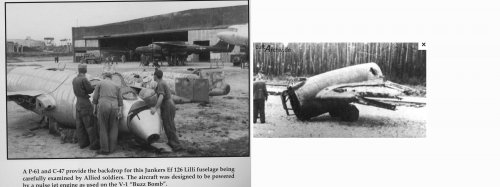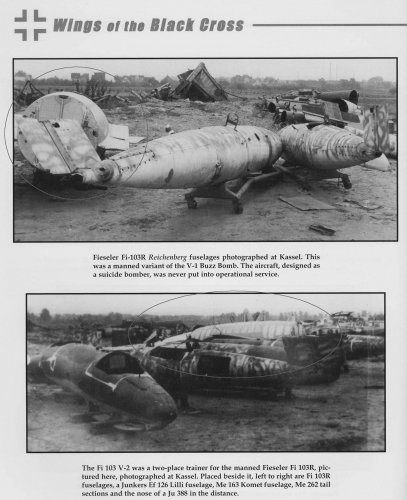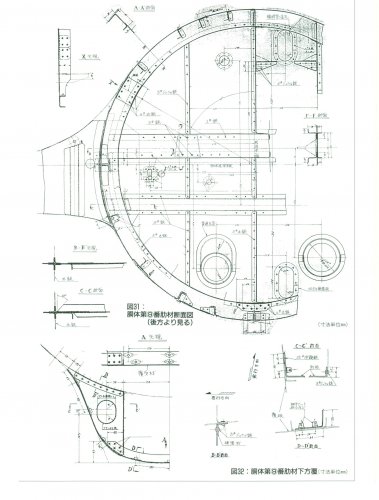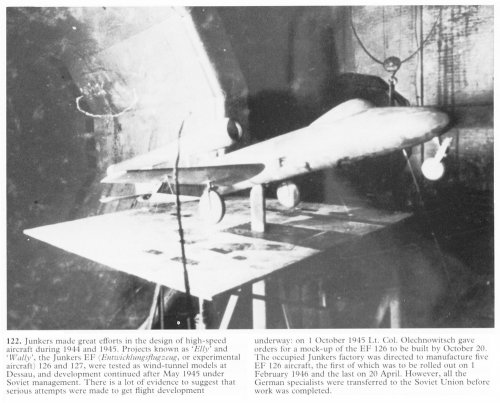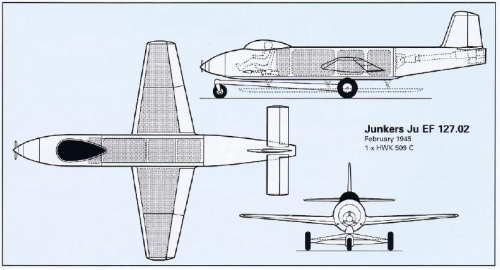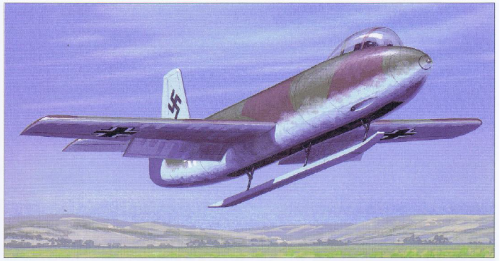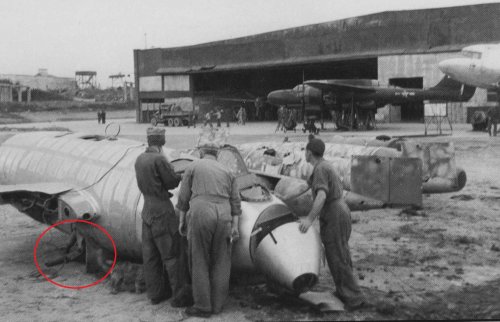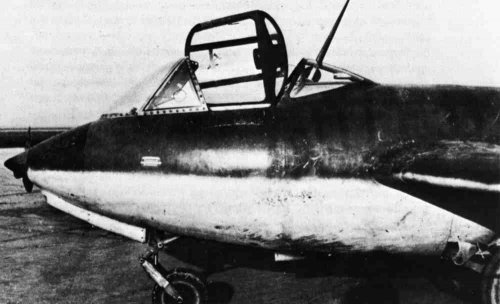kiradog
ACCESS: Confidential
- Joined
- 3 February 2008
- Messages
- 77
- Reaction score
- 40
This is the standard text published on this EF 126 design:Heinz Schreiber. As the aircraft was not equipped with an engine at this time, it was towed by a Ju88G6. During the second non-powered test flight on 21.05.1946 the EF126-V1 crashed on landing at Dessau. The Junkers test pilot Matthies was killed during that accident.
Some modifications were introduced at the four other EF126s and in June 1946 the remaining four aircraft were ready to fly. In Summer 1946 the EF126 were inspected by a Russian governmental commission. Due to the small range, the minimum gun fire and the missing armors they were not satisfied with the EF126 design. However at least three EF126 (-v2, -v3 and -v4) were transfered to Russia for further flight trials in September 1946.
The EF126 development seemed to have been continued in Russia, at least the EF126-V5 was first flown on 16.03.1947, again a non-powered flight towed by a Ju88 as in Dessau. A total of 12 flights with a flight time of totally 3 hours and 15 minutes were performed in 1947 by the -V3 and the -V5 On 20.06.1948 the Russian Aviation Ministry advised the stop of any further development of the EF126.
Yet in the new Wings of the Black Cross No. 9 there is a series of 4 photos taken with US troops in Kessel showing 5 completed fuselages of the EF 126. This project seems to be further along then previous published information.
Has anyone else seen these photos and can comment on them.
Gary
Some modifications were introduced at the four other EF126s and in June 1946 the remaining four aircraft were ready to fly. In Summer 1946 the EF126 were inspected by a Russian governmental commission. Due to the small range, the minimum gun fire and the missing armors they were not satisfied with the EF126 design. However at least three EF126 (-v2, -v3 and -v4) were transfered to Russia for further flight trials in September 1946.
The EF126 development seemed to have been continued in Russia, at least the EF126-V5 was first flown on 16.03.1947, again a non-powered flight towed by a Ju88 as in Dessau. A total of 12 flights with a flight time of totally 3 hours and 15 minutes were performed in 1947 by the -V3 and the -V5 On 20.06.1948 the Russian Aviation Ministry advised the stop of any further development of the EF126.
Yet in the new Wings of the Black Cross No. 9 there is a series of 4 photos taken with US troops in Kessel showing 5 completed fuselages of the EF 126. This project seems to be further along then previous published information.
Has anyone else seen these photos and can comment on them.
Gary

